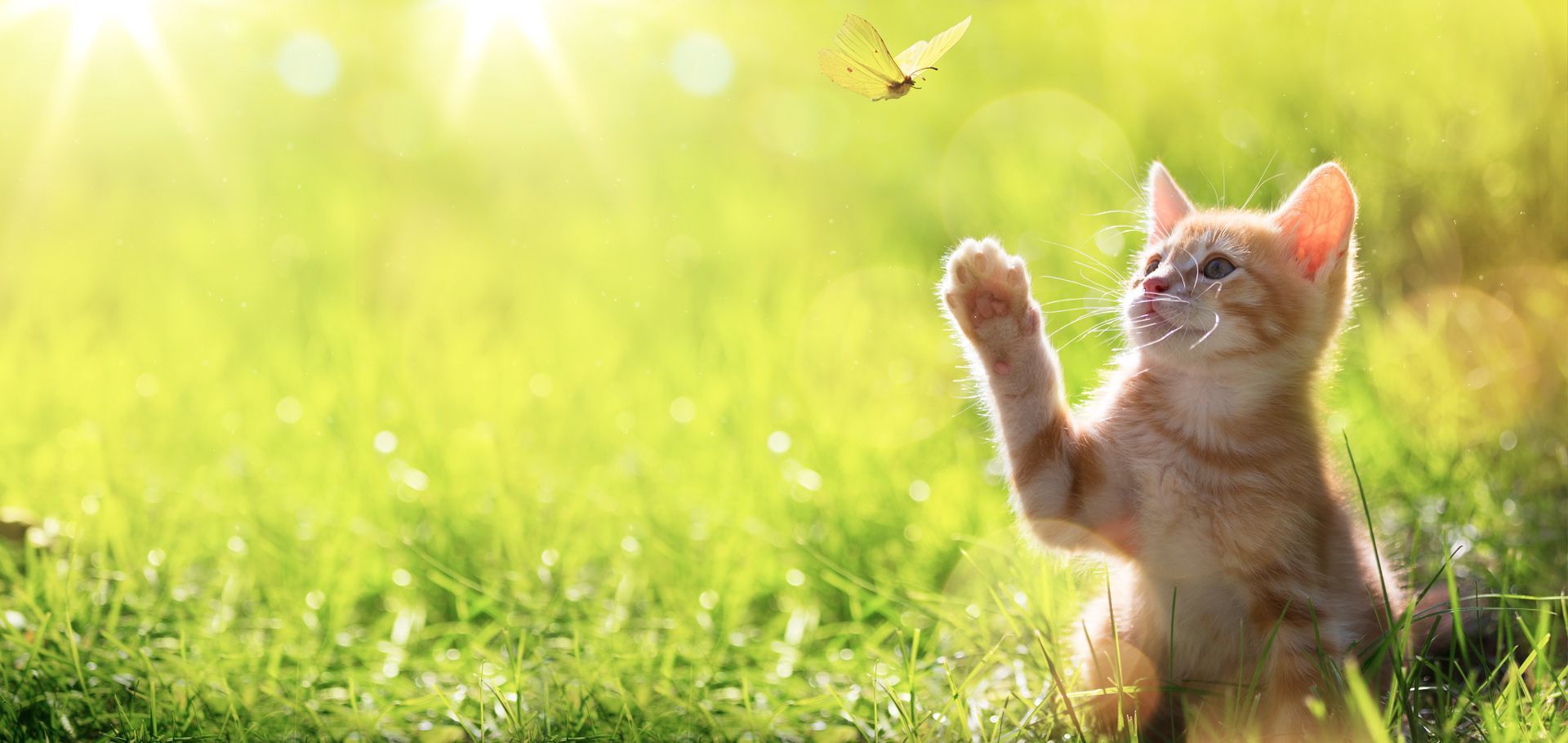
Flea control, especially when addressing fleas on kittens, is critical to maintaining your cat's health and happiness. The thought of how to give a cat a flea bath can send many cat owners into a tailspin of worry, picturing their beloved pet in distress and themselves in a battle of splashes and scratches.
However, this doesn't have to be the case.
Don't worry; in this article, we'll jump into the process of giving your cat a flea bath. By breaking it down into simple, easy-to-follow steps, we'll try to make this seemingly daunting task a manageable and even rewarding experience for you and your feline companion!
The Flea Life Cycle and How It Affects Your Cat
Cat fleas (Ctenocephalides felis) are common in households with pets. These wingless parasites feed on the blood of animals and can quickly turn from a minor nuisance into a significant problem, biting both you and your beloved furry buddies.
That said, understanding the life cycle of cat fleas is crucial for effective control and to prevent a potential infestation of these persistent blood-suckers. Here's a typical overview of their life cycle:
Stage 1: Eggs
After feeding on blood, a female flea starts reproducing and laying eggs. These tiny, white eggs, about 0.5mm in size, are smaller than a grain of sand, making them nearly invisible, especially when scattered in carpets and on furniture.
On average, a female flea lays about 20 eggs a day, potentially up to 50, comprising about half of the flea population in a home. Pets unknowingly spread these eggs around as they move, dropping them into their environment. The eggs hatch into larvae when conditions of temperature and humidity are favorable.
Stage 2: Larvae
Flea larvae, which are white and legless, avoid light and bury themselves in fabrics. Unable to feed on a host, they consume "flea dirt"—adult flea feces composed of dried blood, often visible as black specks. The larvae, larger than the eggs and growing up to 5mm, represent about 35% of a household's flea infestation. They hide in dark areas like carpets, under furniture, and in pet bedding.
Stage 3: Pupae
The cocoon stage, or flea pupae, accounts for 10% of a home's flea population. This stage can last days to weeks or even months in less ideal conditions. The cocoon's sticky outer layer keeps the pupae hidden and protected from vacuums and chemicals. Adult fleas emerge from the cocoon only when they detect a potential host through vibrations, carbon dioxide levels, and body heat.
Stage 4: Adults
Emerging adult fleas seek a host to feed on, usually within hours. If they fail to find a host, their survival is at risk. Females start reproducing after their first blood meal, laying eggs within days. Adult fleas change in appearance post-feeding, growing plumper and lighter in color. They comprise 5% of the flea population in a home and are typically found on pets, continuing the cycle of feeding and reproduction for several weeks.
Before Giving Your Cat A Flea Bath
Proper preparation before bath time is essential to avoid the discomfort of scratches from a distressed cat, especially when dealing with fleas on kittens. Before starting, gathering all the necessary supplies is important, which is even more crucial when bathing kittens with fleas. Ensure you have:
- A cat-safe shampoo—one that's gentle enough for kittens
- A soft washcloth
- A pitcher or cup for pouring water
- A non-slip mat to secure the bathing area
- Your cat's or kitten's favorite treats for a rewarding experience after the bath.
Here are a few additional reminders:
- Introduce your cat to the tub or sink before adding water to help them get comfortable with the environment.
- Place a non-slip mat in the tub or sink to prevent your cat from slipping.
- Trim your cat's nails to reduce the risk of scratches.
- Gently brush your cat's fur to untangle any mats before wetting it, which aids in a smoother bathing process.
- Be cautious with scissors; they should be a last resort due to the risk of accidentally cutting the skin.
- If possible, have someone assist you during the bath.
Remember, the preparatory phase is as equally important as the actual bathing! Taking the time to properly prepare both your cat and the bath area is essential for a stress-free and controlled bathing experience.
How To Give A Cat A Flea Bath
Learning how to give a cat a flea bath successfully involves careful steps and a calm approach. Here's a simple guide to help you through the process:
Step 1: Ideal Water Temperature
Begin by filling the tub with lukewarm water, about 4 to 5 inches deep. The right temperature is key—it should feel comfortably warm to the touch, similar to what you enjoy for your bath.
Step 2: Gentle Introduction
Start by moistening your cat's neck area with your hands. Keeping their head dry at this stage helps prevent stress. Speaking in a calm, reassuring voice is vital in keeping your cat relaxed.
Step 3: Getting Used To It
Gradually introduce your cat to the water, maintaining a soothing presence to ease their anxiety.
Step 4: Soft Rinsing Method
Use a pitcher or cup to gently pour water over your cat. This method is less intimidating than a shower spray, helping to keep your cat calm throughout the process.
Step 5: Applying Flea Shampoo
When your cat is sufficiently wet, apply a cat-specific flea shampoo, starting from the neck down, avoiding the face and ears. Gently massage the shampoo into their fur in the direction of hair growth. This helps the shampoo penetrate effectively for optimal flea control.
Step 6: Thorough Rinsing
It’s crucial to rinse out all the flea shampoo thoroughly. Residual shampoo can irritate your cat's skin. A final rinse should ensure that no shampoo remains.
Step 7: Face Cleaning
Lastly, use a damp washcloth to clean your cat’s face, carefully avoiding the ears to prevent water from entering.
How Can I Help My Cat After A Bath?
You must continue working calmly and efficiently as you dry your cat after their bath. Keep them in a small, draft-free area to make the process easier. For long-haired breeds, gently brush out any tangles in their fur.
Cats often have different preferences for drying; some may enjoy being swaddled in a warm towel, while others prefer to be left alone. Once you're finished, reward your patient feline with lots of praise and a treat. However, remember not to use a hair dryer, as it can be too hot and noisy for their comfort.
Conclusion
The bottom line in learning how to give a cat a flea bath is that flea control is a vital aspect of pet care, crucial for both adult cats and delicate fleas on kittens.
Remember, the right approach, from the water temperature to the use of appropriate flea shampoo, can make a significant difference. So, grab that shampoo, prep that bath, and turn what could be a daunting task into a bonding experience with your beloved pet. Remember, a happy cat means a happy home!
Get the Help Your Cat Needs at Brewerton Hospital for Animals!
Dealing with fleas on cats can be a challenging and stressful experience. If you suspect your furry friend is struggling with a flea infestation that no flea bath can solve, seeking professional help is crucial. At Brewerton Hospital for Animals, we're ready to assist you. Book an appointment with us to ensure your cat receives top-notch care.
Our team is dedicated to offering exceptional treatment and support, ensuring your beloved cat gets the best possible solution for their flea problem. Trust in our commitment to provide quality care and attention, helping your feline friend return to their happy, healthy self!
SHARE THIS ARTICLE




